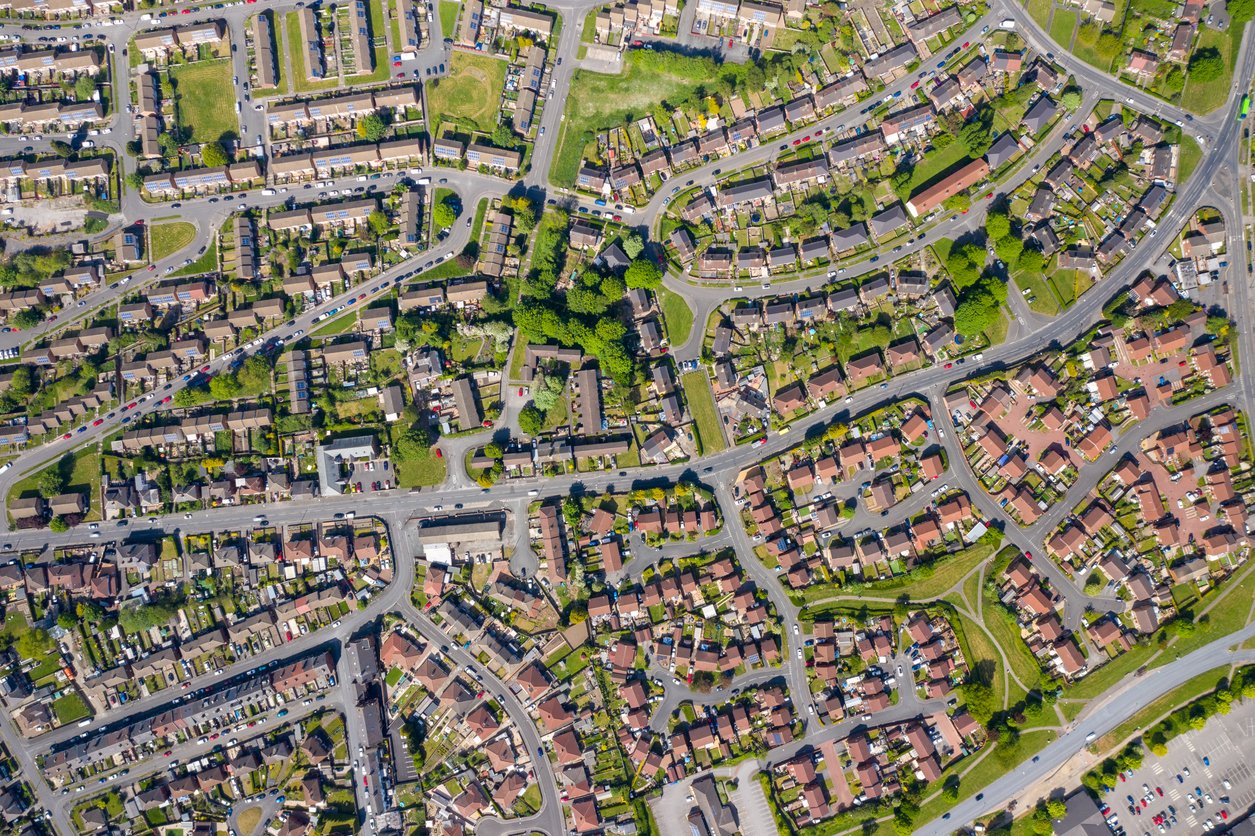The final report of the New Towns Taskforce, published in September 2025, is the most significant statement of government intent on large-scale development in more than half a century. It identifies 12 locations for potential designation as new towns and sets out 44 recommendations for how they should be delivered.
For developers and planners, the report is a call to prepare. It highlights delivery structures, planning reforms, and funding mechanisms that will shape how these projects come forward.
The keystone for delivery of the new generation of New Towns is the development corporation model, which the Taskforce argues provides the clearest route to assembling land, capturing value, and delivering complex long-term projects.
This article focuses on three critical aspects of the report: delivery pathways, the development corporation model, and its implications for land value capture.
Recommended Locations
First up, where are the proposed New Town locations? The report identifies 12 locations that the Taskforce considers suitable for new towns. These have been selected on the basis of connectivity, economic potential, housing demand, and local support.
The boundaries of each are indicative and will require further consultation, but together they represent a geographically diverse shortlist.
- Adlington, Cheshire: The new town proposal in Cheshire East is concentrated around the existing village of Adlington. The proposal, submitted by landowners Belport Adlington Limited, would deliver a standalone new town of over 14,000 - 20,000 homes on approximately 970 hectares of greenfield land.
- Brabazon, South Gloucestershire: The new town proposal in South Gloucestershire, within the West of England Mayoral Combined Authority (WECA) geography, is a group of sites across an arc, with a high-density core on the former Filton Airfield, known as Brabazon - on the outskirts of Bristol), offering the earliest phase of delivery.
- Crews Hill, Enfield: The new town proposal in Enfield offers a unique opportunity to create a new, family-centred community within the Greater London boundary, leading the way in releasing poor quality Green Belt land for sustainable, quality development.
- Heyford Park, Oxfordshire: Heyford Park in Cherwell presents a distinctive location for a standalone new town. This is an opportunity to deliver over 13,000 homes centred around a 505-hectare brownfield site in single ownership in the heart of Oxfordshire.
- Leeds South Bank: The new town proposal is 258 hectares in the South Bank area and located directly south of Leeds city centre. Leeds South Bank provides an opportunity to deliver up to 13,000 new homes and three million square feet of new commercial space
- Manchester Victoria: The new town proposal in Manchester, Victoria North represents an opportunity to deliver a sustainable “new town within a city”. It covers 155 hectares of brownfield land immediately northeast of Manchester city centre, a major hub for jobs, services, and leisure. It could deliver 15,000 homes.
- Marlcombe, East Devon: The new town proposal in East Devon would be located only a few miles from the centre of Exeter on a standalone greenfield site in the heart of the Clyst Valley, to the south of the A30 and Exeter Airport.
- Milton Keynes: The “renewed town” proposal in Milton Keynes could support the increased delivery of c.40,000 new homes across the city and expansions to the city periphery, to reinvigorate an already highly productive local economy.
- Plymouth: The new town proposal in Plymouth is an opportunity for a new town within the city centre and surrounding area, delivering over 10,000 homes across multiple sites.
- Tempsford: The new town proposal near Tempsford in Bedfordshire is a unique opportunity with potential to provide over 40,000 homes in a standalone greenfield settlement.
- Thamesmead: As part of the original vision for the post-war development of Thamesmead in the 1960s and the reconstruction of London, the land is currently an expansive 100 hectare brownfield site with capacity for 15,000 homes.
- Worcester Parkway: The new town proposal at Worcestershire Parkway is a 1,130 hectare greenfield site based around an existing train station located to the south-east of Worcester, in Wychavon. There are currently plans for 10,000 homes on this site,
The report notes that not all locations will progress at the same pace. Some already have advanced planning work, while others will require significant infrastructure investment before development can begin. The Housing Secretary has suggested that three of these sites will come forward before the next election (i.e. in the next three years).
Delivery Pathways for New Towns
The Taskforce is explicit that delivery must not be left to chance. Past new town programmes often faltered because of fragmented responsibilities, inconsistent governance, and weak financial arrangements. The report stresses that new towns need dedicated delivery bodies with clear powers and accountability.
The Taskforce sets out a staged approach. At the outset, interim measures may be needed to protect land and coordinate early activity, including safeguarding directions and interim planning policies. Once a location is confirmed, the preferred delivery mechanism is a statutory development corporation with full planning powers. These bodies are expected to act as the local planning authority, prepare the new town’s local plan, and take responsibility for infrastructure coordination.
This approach is designed to provide certainty. Developers and investors are being told that the government intends to back new towns with a governance model capable of matching the complexity of the task.
The Development Corporation Model
Development corporations are not new. They were used extensively in the post-war new towns programme, and more recently at Ebbsfleet and for the London Olympics. The Taskforce is clear that they remain the most effective instrument for delivery.
A development corporation has three defining features:
- Land Assembly: It has statutory powers to acquire land, including through compulsory purchase if necessary. This allows it to assemble large, coherent sites, rather than relying on piecemeal development.
- Planning Authority Role: It operates as the planning authority for the designated area. This gives it direct control over development management, local plan preparation, and the application of design codes or zoning.
- Infrastructure Delivery: It coordinates investment in transport, utilities, schools, and healthcare, ensuring that development is matched with services and avoids the infrastructure lag that undermines many large sites.
The Taskforce emphasises that development corporations provide not only control but also confidence. For private investors, the presence of a corporation signals that the government is serious about delivery. For local communities, it provides a single point of accountability. For developers, it reduces uncertainty by offering a clear framework for how land will be planned and serviced.
Land Value Capture
One of the report’s most important themes is land value capture. The Taskforce recognises that the uplift in land value generated by new town designation is significant, and argues that this value must be harnessed to fund infrastructure and community facilities.
Development corporations are well-placed to do this. By acquiring land at or near existing use value, they can capture the uplift that results from planning permission and infrastructure investment. This captured value can then be recycled into the delivery of roads, schools, parks, and utilities.
The report calls for early certainty for landowners, with clear statements about what compensation they can expect. It also stresses the need for strong commercial negotiation and professional advice, to avoid situations where landowners or developers over-promise in exchange for permissions but under-deliver later.
For developers, the implication is that land value capture will become a central principle of new town delivery. Engagement with development corporations will need to recognise this reality, but also presents an opportunity to participate in structured, well-funded projects that are less vulnerable to infrastructure delays.
Other Recommendations
The report’s 44 recommendations cover a range of topics, ranging from the use of design codes to planning and tax reforms required to support the delivery of new towns. Notably for LandTech, recommendation 35 suggests: New town delivery bodies should work with MHCLG, HE and the industry to adopt a digitally-enabled integrated approach to planning. Watch this space…

Implications for Developers and Planners
The Taskforce’s recommendations point to several clear implications for the sector:
- Engagement with development corporations will be essential. These bodies will control planning powers, land assembly, and infrastructure coordination. Developers will need to understand their governance and decision-making processes.
- Land value capture is non-negotiable. Uplift generated by designation will be harnessed to fund infrastructure. Developers should prepare for partnership models that prioritise reinvestment over speculative gain.
- Timelines may accelerate. The report recommends interim approvals and faster statutory consultations. Once a site is designated, early phases could move quickly.
Location matters. The 12 recommended sites represent the next frontier of large-scale housing. Developers should track announcements closely and prepare to act where government focus is strongest.
How LandTech Can Help
LandTech’s platform is uniquely placed to support developers and planners as new town policy takes shape.
- Land Assembly: Identify fragmented ownership patterns, registered titles, and acquisition opportunities across the twelve shortlisted areas.
- Planning Intelligence: Access planning history and policy layers to understand how existing frameworks interact with potential new town boundaries.
- Infrastructure Mapping: Visualise transport corridors, utilities, and environmental constraints to assess viability.
- Market Analysis: Benchmark housing demand and land values in shortlisted areas to support investment decisions.
- Stakeholder Engagement: Build evidence for discussions with development corporations, local authorities, and investors.
By combining detailed land and planning data with analytical tools, LandTech helps developers move with confidence in a market that is about to undergo profound change.
Conclusion
The New Towns Taskforce has set a clear direction. Delivery will be led by dedicated development corporations, with land value capture at the heart of funding, and with a shortlist of twelve locations now on the table.
For developers and planners, this represents both opportunity and challenge. Those who understand the delivery pathways, engage early with emerging governance structures, and use the best available data will be well-placed to take advantage of the next wave of large-scale development in England.
Want to learn more about LandTech? Click below.


